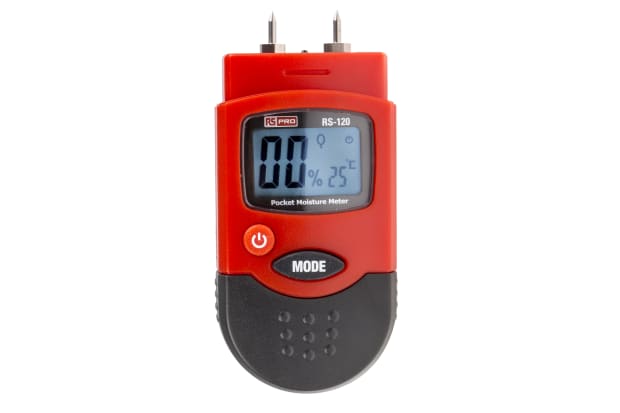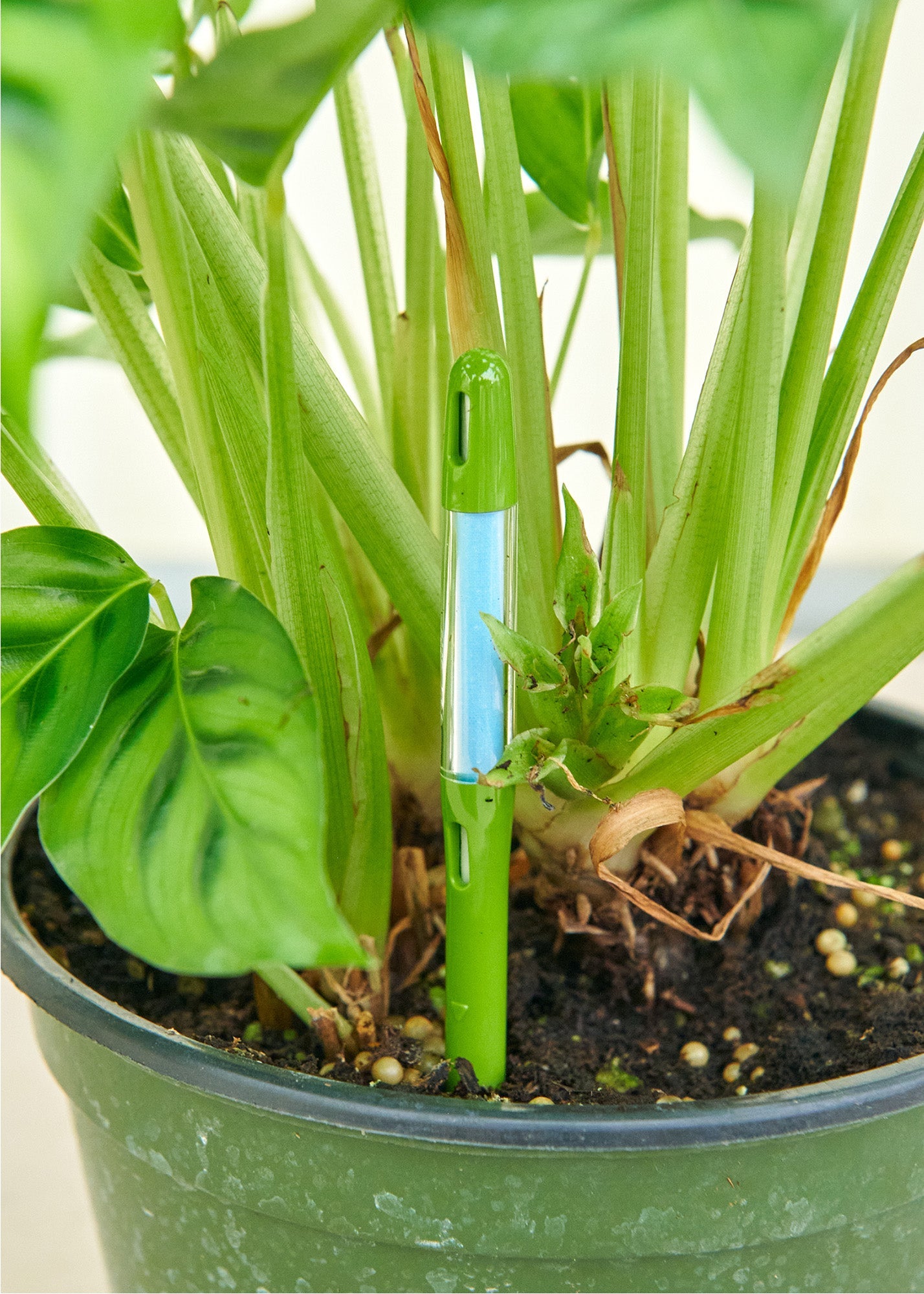Moisture Meter Purchasing Guide: What to Try to find in High-Quality Instruments
Moisture Meter Purchasing Guide: What to Try to find in High-Quality Instruments
Blog Article
Look Into the Globe of Dampness Meters: Everything You Required to Know
In the world of dampness meters lies a world of accuracy and practicality that usually goes undetected. Comprehending exactly how moisture meters operate, the various types available, and their diverse uses can lose light on their importance in making certain quality and efficiency.
Just How Moisture Meters Work
Dampness meters operate by gauging the electrical conductivity or capacitance of products to establish the wetness material present - Moisture Meter. These meters are vital tools throughout numerous industries, including woodworking, building and construction, and farming. By using different techniques such as pin-type or pinless modern technology, dampness meters give accurate analyses that help specialists make notified choices
Pin-type dampness meters work by inserting the sharp pins into the product being examined. On the various other hand, pinless dampness meters utilize electromagnetic signals to check a larger location without causing any type of damage to the material's surface area.
Despite the method used, dampness meters play a critical role in stopping issues such as mold and mildew development, architectural damages, or item issues triggered by excess dampness. Understanding how these meters job is essential for ensuring the top quality and honesty of materials in different applications.
Kinds of Wetness Meters
Given the vital duty moisture meters play in numerous industries, it is vital to understand the different kinds readily available to experts for precisely evaluating dampness levels. There are largely two primary kinds of moisture meters: pinless and pin-type dampness meters.
Pin-type moisture meters utilize two pins that are placed right into the product being evaluated to measure the electrical resistance in between them. This technique is typically used for wood, drywall, and other structure materials. Pin-type meters supply exact readings at details depths, making them perfect for recognizing moisture slopes.
On the various other hand, pinless moisture meters make use of electromagnetic sensing unit plates to scan a bigger location of the material without creating any kind of damages. This kind appropriates for swiftly scanning huge locations and is typically made use of for flooring, walls, and ceilings. Pinless meters are hassle-free for taking readings on finished surface areas without leaving any visible marks.
Both kinds of wetness meters have their advantages and are selected based upon the specific demands of the work handy. Understanding the distinctions in between these types is vital for professionals to make precise wetness analyses.
Applications Across Industries
With diverse performances, dampness meters locate widespread application across different industries, helping specialists in ensuring optimal conditions for materials and frameworks. In the agriculture industry, wetness meters are very useful for determining the moisture content in grains, seeds, and hay, guaranteeing quality assurance and stopping mold and mildew growth. Building experts rely upon wetness meters to examine the dampness degrees in structure materials like drywall, concrete, and timber, which is essential for preserving structural integrity and avoiding concerns like rot or mold. The flooring industry utilizes dampness meters to gauge the wetness material in subfloors before mounting different flooring, preventing costly problems because of excess wetness. In the food sector, wetness meters are used to monitor and regulate moisture degrees in items such as grains, nuts, and dried fruits to keep freshness and quality. In addition, click over here now wetness meters play a vital duty in the reconstruction and damages evaluation industry by aiding experts address and identify water damages in buildings without delay. Across these varied industries, dampness meters are vital tools for making certain the quality, safety and security, and durability of various products and products.
Tips for Utilizing Wetness Meters
Utilize the moisture meter's calibration settings to ensure exact analyses when measuring the moisture content in numerous products. Furthermore, make sure the meter is set to the appropriate moisture range for the product you are determining to acquire the most accurate results.

When making use of a pin-type dampness meter, put the pins to the proper deepness suggested for the product being checked. This makes sure that the wetness readings are taken from the appropriate depth within index the product, giving an extra precise depiction of its moisture content. For pinless moisture meters, remember to maintain correct call with the material's surface to obtain trusted analyses.

Regularly check and change the batteries in your wetness meter to stop imprecise analyses due to reduced power. Store the meter in a completely dry and risk-free place when not being used to extend its lifespan and preserve its accuracy. By following these ideas, you can take full advantage of the efficiency of your wetness meter and get accurate dampness content dimensions throughout different products.

Upkeep and Calibration
To make sure the accuracy of dampness content dimensions, routine upkeep and calibration of the wetness meter are important actions in its proper functioning. Maintenance includes keeping the wetness meter clean and cost-free from debris that can affect its analyses. It is essential to comply with the producer's standards for cleaning to avoid damage to the tool. Additionally, routine calibration is essential to confirm the precision of the readings. Calibration changes the dampness meter to make certain that it gives reputable and regular results.
Calibration needs to be executed periodically, especially if the wetness meter is utilized often or in critical applications where specific measurements are required. Numerous wetness meters include calibration tools or can be adjusted by expert solutions - Moisture Meter. It is suggested to maintain a log of calibration days and results to track the efficiency of the wetness meter gradually. By preserving and adjusting the wetness meter consistently, users can trust the accuracy of the dampness material dimensions acquired.
Verdict
In verdict, wetness meters play a vital function in various sectors by precisely determining the dampness material of materials. Recognizing exactly how these gadgets function, the different types readily available, and appropriate upkeep and calibration are important for getting dependable outcomes. Whether in manufacturing, building, or agriculture, using moisture meters assists ensure quality assurance and effectiveness in processes.
Building and construction specialists depend on dampness meters to assess the dampness levels in structure materials like drywall, wood, and concrete, which is vital for preserving architectural integrity and stopping issues like rot or mold and mildew. The flooring sector utilizes wetness meters to gauge the wetness web content in subfloors prior to installing different floor treatments, protecting against costly damages due to excess moisture.Make use of the moisture meter's calibration setups recommended you read to guarantee accurate analyses when measuring the moisture material in different materials. By complying with these ideas, you can make best use of the efficiency of your dampness meter and obtain precise wetness material measurements across various materials.
In conclusion, dampness meters play an essential role in different sectors by accurately measuring the wetness content of materials.
Report this page